 |
 |
 |
| |
Birth Outcomes following Prenatal Exposure to Dolutegravir: the Dolomite-EPPICC study
|
| |
| |
CROI 2022 Feb 11-16
Claire Thorne1, Karoline Aebi-Popp2 , Luminita Ene3, Marco Floridia4, Anna Maria Gamell5, Marta Illan6, Helen Peters1, Anna Samarina7, Leigh Ragone8, Carlo Giaquinto9, Vani Vannappagari8 for the Dolomite-EPPICC study group
1 UCL Great Ormond Street Institute of Child Health, London, UK, 2Bern University Hospital, Switzerland; 3Victor Babes Hospital, Bucharest, Romania; 4Istituto Superiore di Sanità, Rome, Italy; 5Hospital Sant Joan de Déu, Esplugues, Spain; 6Hospital Universitario Clínico San Carlos, Madrid, Spain; 7 St Petersburg City Centre for AIDS and Infectious Diseases, St Petersburg, Russian Federation; 8ViiV Healthcare, Research Triangle Park, NC, USA; 9University of Padova, Padova, Italy
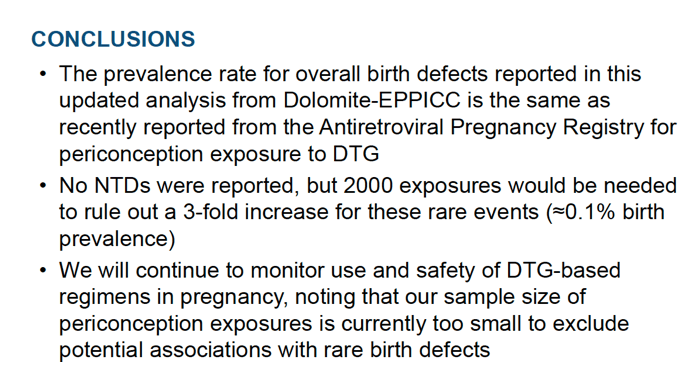
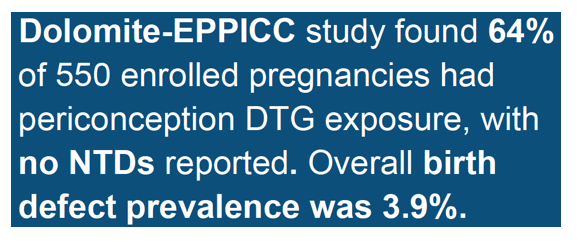
Neural tube defects are severe birth defects of the brain and spine.
CDC urges all women of reproductive age to get 400 micrograms (mcg) of folic acid every day, in addition to consuming food with folate from a varied diet, to help prevent neural tube defects (NTDs).
NTDs occur when the neural tube does not close properly. The neural tube forms the early brain and spine. These types of birth defects develop very early during pregnancy, often before a woman knows she is pregnant.
The two most common NTDs are spina bifida (a spinal cord defect) and anencephaly (a brain defect).
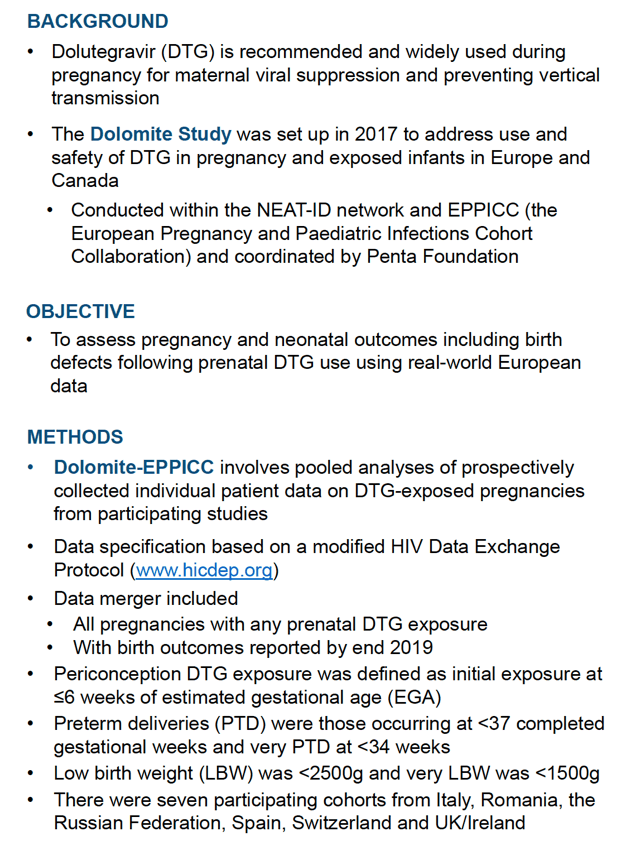
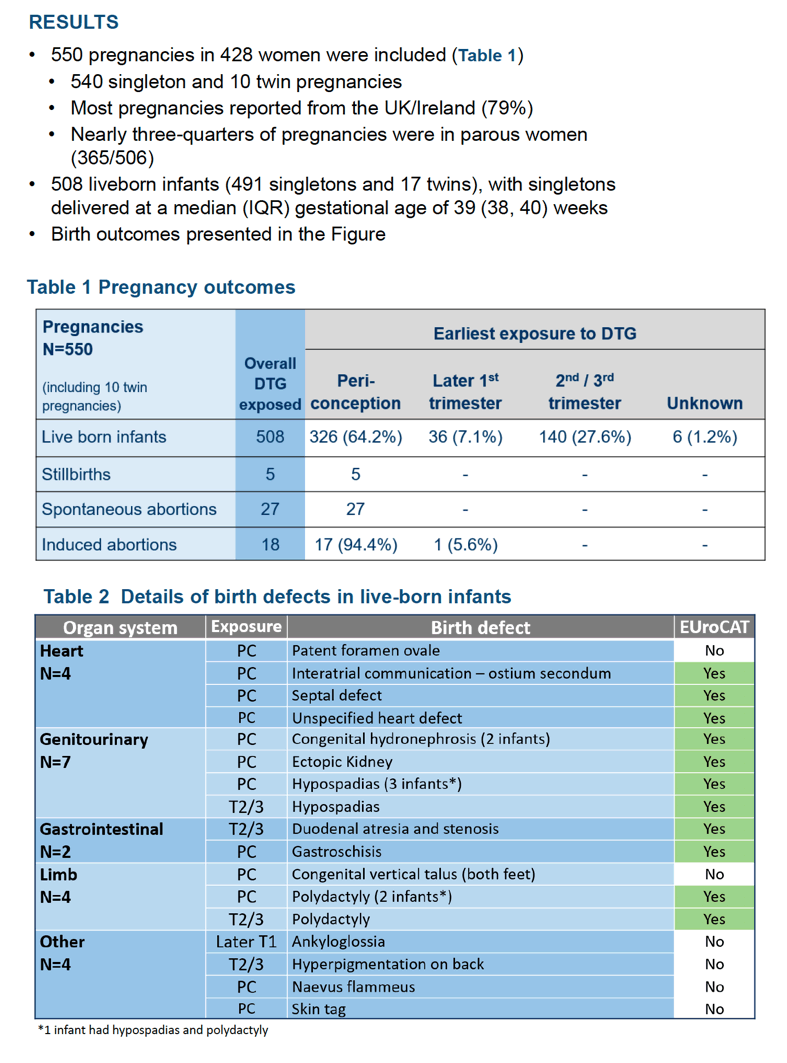
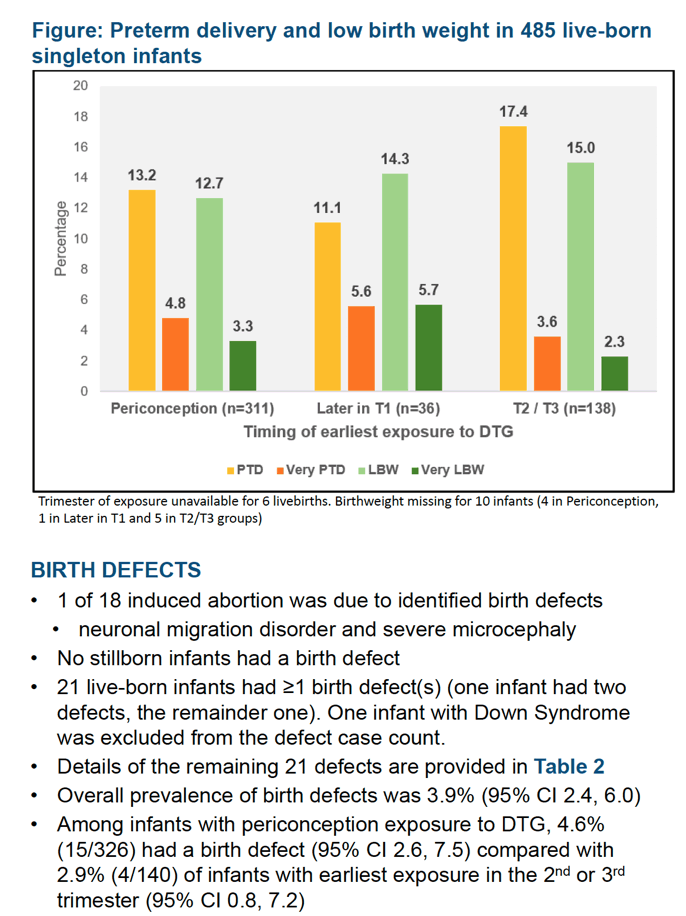

Acknowledgements: Thanks to participating cohorts/studies: Italian Group on Surveillance of Antiretroviral Treatment in Pregnancy, NENEXP Study (Catalonia), Swiss Mother and Child HIV Cohort Study (MoCHiV), the Integrated Screening Outcomes Surveillance Service (previously UK / Ireland National Surveillance of HIV in Pregnancy and Childhood), Madrid Cohort of HIV-Infected Mother-Infant Pairs, St Petersburg City Centre for AIDS and Infectious Diseases Cohort, Victor Babes Hospital Cohort.
|
| |
|
 |
 |
|
|